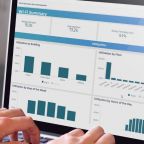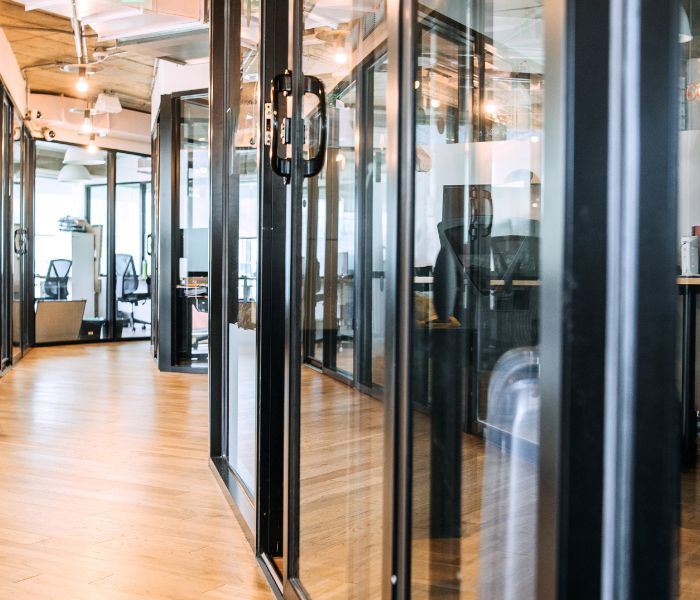Even though many employees have become comfortable working remotely, that doesn’t mean organizations should lose sight of how important it is to create a healthy office environment. Spring is in the air, and allergies are kicking in. The final remnants of the cold and flu season still have to be dealt with. And of course, we’ve got to be mindful of the continued threat of Covid.
FM:Systems has firsthand experience and a wealth of technical knowledge on how to balance in-office and remote work. That’s why we’ve put together this advice for organizations looking to use indoor air quality (IAQ) sensors and other environmental data to ensure the office is a healthy and welcoming place for staff.
Learn more about the different types of sensors workplaces can install and their benefits >
Let’s face it, after spending months, if not years, away from the office, people want to know they’re returning to a safe and healthy environment. This means it’s up to employers to provide such a space for them. Here’s how:
The Relationship Between Comfort and Health
First, let’s understand how businesses should be monitoring the environment to limit the spread of viruses. Two factors impact this – relative humidity (RH) and temperature.
Studies have shown that an RH of 40 to 60% is optimal for human health in indoor spaces. If that number drops below 40, the resultant moisture-free air creates the perfect route for long-distance transmission of viruses. Effectively, this means germs travel further and stay longer in the air. If the indoor RH reaches above 60%, the high level of moisture in the air can also contribute to hidden mold growth in areas like HVAC systems and inside walls. This can cause an entire list of potential health problems for employees and other occupants, not to mention damages to the property. Maintaining an RH of 40 to 60% minimizes the spread of airborne viruses, mold growth, and more.
Those who love the AC should also take note of the impact of temperature on the spread of viruses. Viruses are ‘shielded’ at low temperatures and can more easily pass from person to person. On the flip side, warmer temperatures mean viruses are not as easily protected, reducing the chance of transmission between employees.
Monitoring IAQ
One of the main factors that can result in poor IAQ is volatile organic compounds (VOCs). These are organic chemicals emitted as gasses from products or processes. Everything from cleaning agents, disinfectants, air fresheners, and dehumidifiers – to something as seemingly innocuous as a new carpet is likely to give off formaldehyde gas.
No need to panic though. This is where environmental sensors that monitor temperature, humidity, light, noise, air pressure, and air quality at the office become the first line of defense against poor IAQ.
By monitoring IAQ all year round, organizations can take the fight to viruses. Think about it, IAQ can affect the health, comfort, and well-being of everyone in the office. And so, it has a direct link to either enhancing or reducing productivity.
Powering up
When linked to a dashboard, these environmental sensors can give managers real-time information and historical data on the air quality at all of their offices. And when connected to quality analytics, things like managing the HVAC system, for example, based on environmental conditions, become significantly easier – not to mention more effective.
But the office environment is more complex than simply turning up or down the HVAC system to moderate the RH levels and temperature. It is gaining an understanding of what causes the negative IAQ to begin with.
This means employers need to consider the following:
- The effects of building utilization on the environment
- The effects of this utilization on the IAQ
By understanding the relationship between these two metrics, employers can mitigate any potential future issues. This is even more so if organizations want to renovate their space to welcome returning employees to a ‘new’ environment. Part of this means asking whether they’ve recently changed their cleaning products, putting on a fresh coat of paint, or installing new carpets. All these will directly impact the IAQ.
Juggling data
Now, addressing the elephant in the room. Should employees have access to the IAQ data? The short answer is yes!
Employers must show their staff that they’re doing everything to provide a safe and healthy working environment. Honesty is always the best policy.
People want to know they’re returning to a healthy workplace. With that in mind, businesses can use different ways of communicating the findings or results of IAQ monitoring:
- An employee experience app
- Display screens throughout the office
- Text alerts
- Email communication
Ongoing process
IAQ monitoring, management, and analysis are not one-off processes or silver bullets that can defend against every virus. Employers should continue to encourage indoor masking when there are spikes in transmissible viruses, whether COVID-related, flu, strep throat, or the common cold.
Common sense is the most effective defense against any airborne contagion, no matter the time of year. Employees also have roles to play and need to be vigilant about their own health and that of their families. Especially now that remote work is widely accepted, employees should not feel pressure to come into the office if they aren’t feeling well.
But employers have a big role to play too. By relying on environmental sensors to track and manage indoor air quality, they’re able to keep people healthy, productive, and happy. And who would say no to that?
Download the Role of Sensors e-book to learn how today’s workforce prioritizes flexibility, what is driving the decision to make the office smarter, and how you can use digital technology to design your smart office to make your workplace more engaging.











